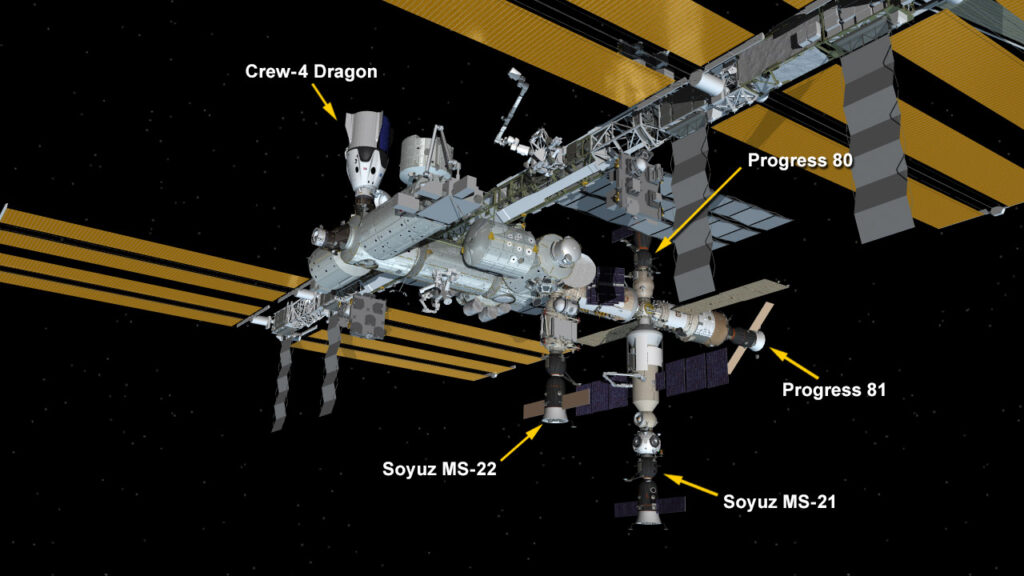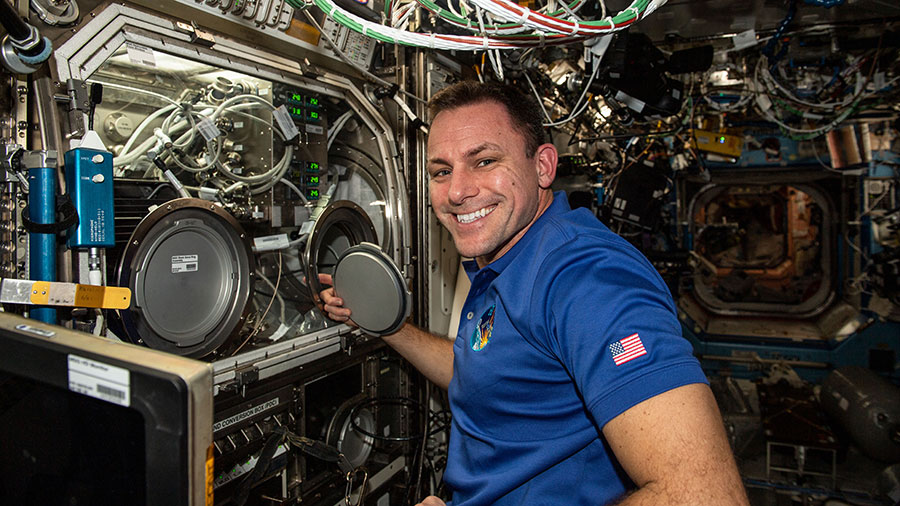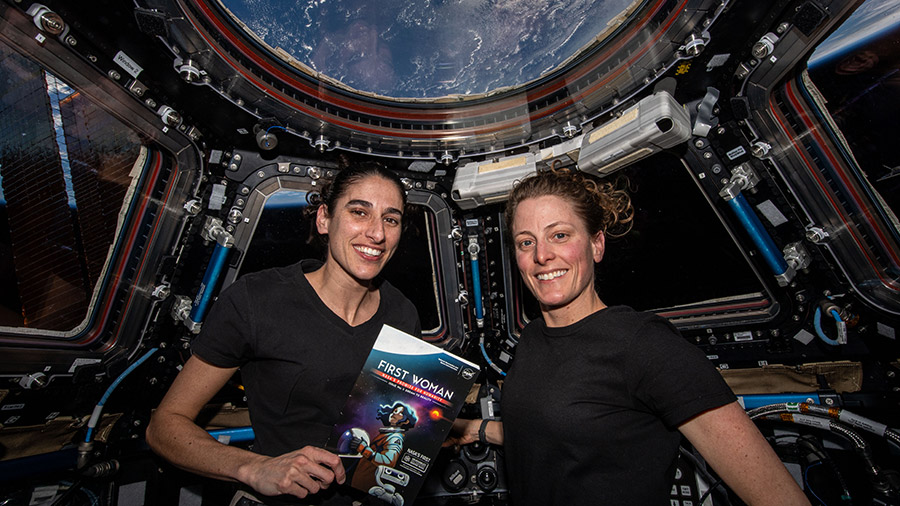
The Expedition 71 crew continued its pharmaceutical research, sequenced DNA, and studied the digestion system on Wednesday. The International Space Station residents also kept up their science hardware and life support maintenance throughout the day.
NASA Flight Engineer Tracy C. Dyson worked in the Harmony module on Wednesday morning studying how microgravity affects surface tension for the Gaucho Lung investigation. Doctors hypothesize results may improve respiratory system medicines and reduce contamination in tubes benefitting both the health care and food industries.
NASA Flight Engineer Jeanette Epps spent her afternoon in the Harmony module sequencing DNA collected from microbe samples swabbed from station surfaces. The Genes in Space Molecular Operations and Sequencing (GISMOS) study seeks to identify bacteria inhabiting station systems without sending samples down to Earth for analysis. Insights may help researchers improve bacterial monitoring and fight antimicrobial resistance maintaining human health on Earth and in space.
Epps earlier helped NASA Flight Engineer Mike Barratt who had been gathering tools to work on the water recovery system located in the Tranquility module. The duo removed the treadmill rack and the water recovery system readying the workspace for the advanced plumbing job that will take place on Thursday.
NASA Flight Engineer Matthew Dominick started his day in Tranquility replacing components in the orbital outpost’s restroom, also known as the Waste and Hygiene Compartment. In the afternoon, Dominick worked in the Columbus laboratory module assembling and installing a device that can measure mass in microgravity. The Space Linear Acceleration Mass Measurement Device (SLAMMD) applies a known force to a crew member then calculates mass using a form of Newton’s Second Law of Motion, force equals mass times acceleration.
During the morning in the station’s Roscosmos segment, cosmonauts Oleg Kononenko and Nikolai Chub scanned their stomachs with an ultrasound device after breakfast. The two were collecting data to help doctors understand how the digestive system adapts to weightlessness. Kononenko went on and downloaded data collected from radiation detectors while Chub packed the Progress 86 cargo craft with items and trash for a disposal.
Roscosmos Flight Engineer Alexander Grebenkin wrapped up operations with the European robotic arm after two days of robotics training and activities. He then spent the rest of the day on cleaning and electronics and communications maintenance.
Learn more about station activities by following the space station blog, @space_station and @ISS_Research on X, as well as the ISS Facebook and ISS Instagram accounts.
Get weekly video highlights at: https://roundupreads.jsc.nasa.gov/videoupdate/
Get the latest from NASA delivered every week. Subscribe here: www.nasa.gov/subscribe




